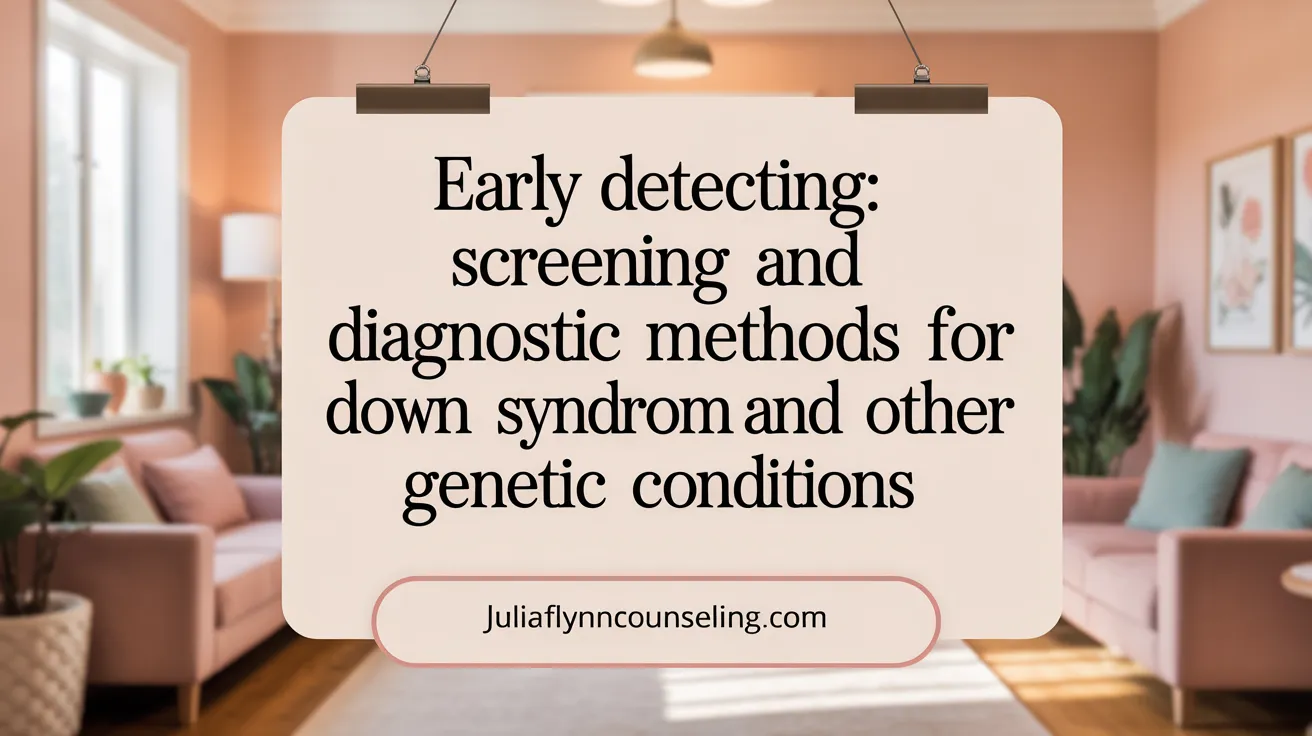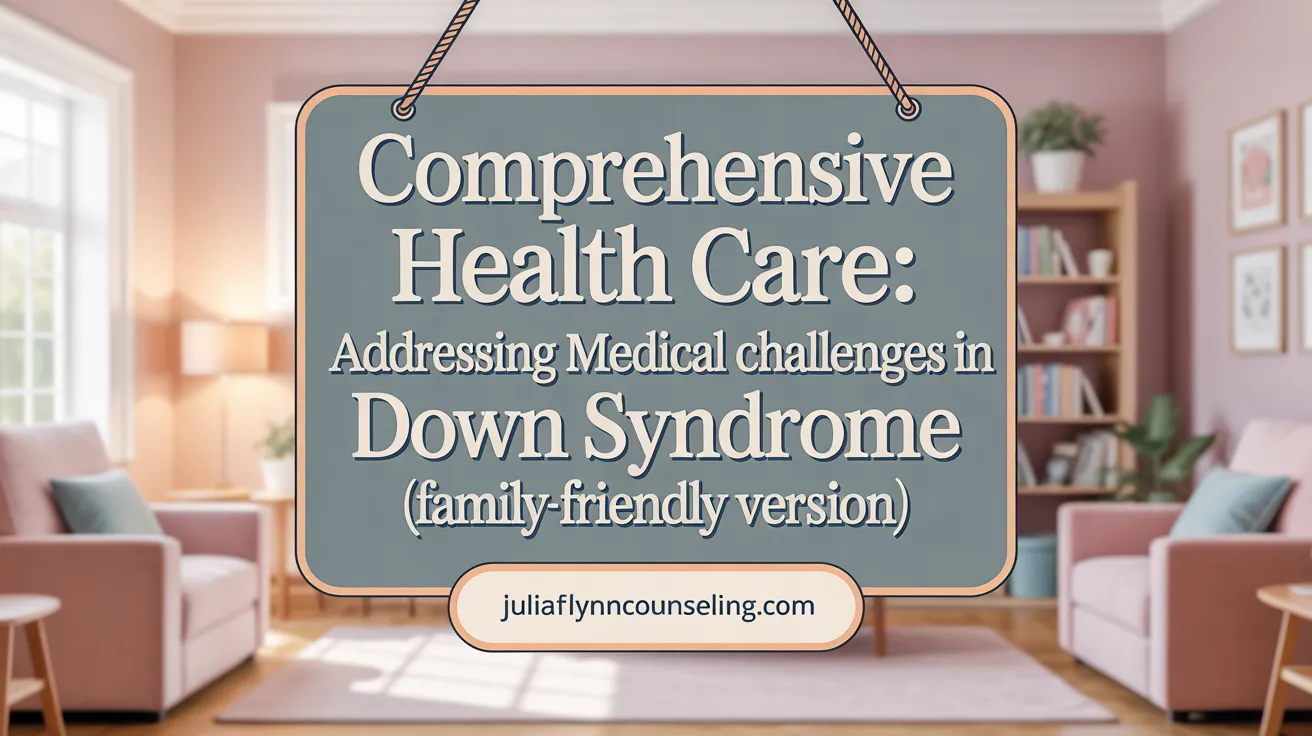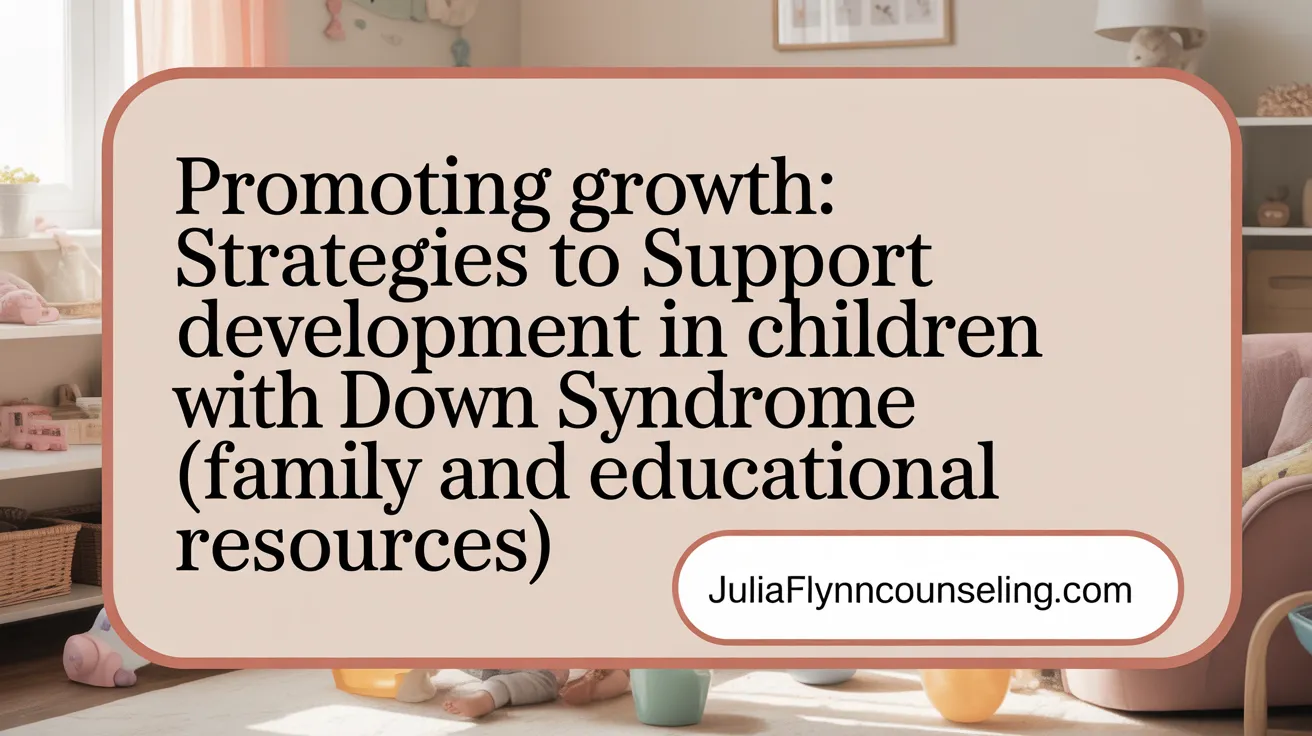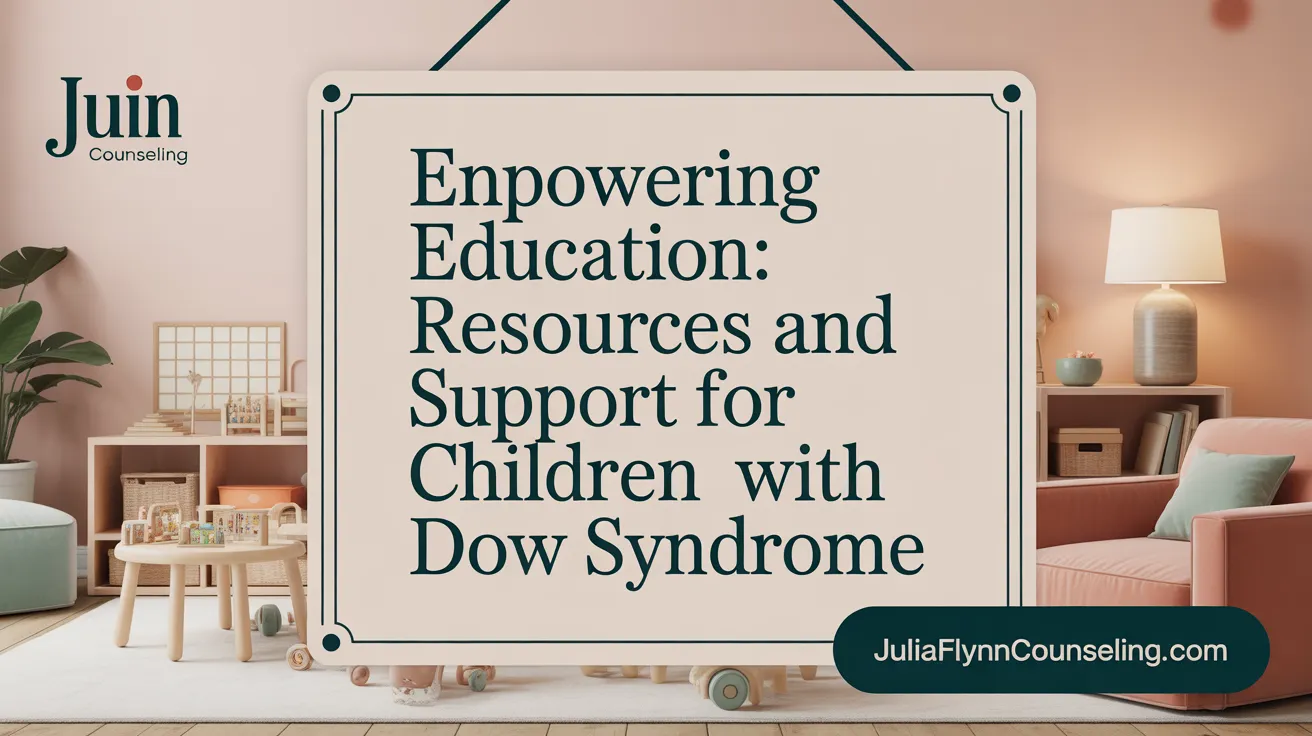Understanding Down Syndrome in Childhood
Down syndrome is a genetic condition marked by the presence of an extra chromosome 21, influencing the physical, cognitive, and health profiles of affected children. This article explores the causes, diagnosis, associated medical conditions, as well as the multifaceted approaches to care, therapy, education, and ongoing support essential for the healthy development and well-being of children with Down syndrome.
Causes and Distinctive Physical Characteristics of Down Syndrome in Children

What are the causes and physical characteristics of Down syndrome in children?
Down syndrome is a genetic condition caused by the presence of an extra copy of chromosome 21. Usually, this occurs due to nondisjunction, where the chromosomes fail to separate properly during cell division, resulting in three copies of chromosome 21 instead of the usual two. Sometimes, the condition is caused by translocation, where part of chromosome 21 attaches to another chromosome, or mosaicism, where only some cells carry the extra chromosome.
Physically, children with Down syndrome often show characteristic features. These include a flat facial profile, upward slanting eyes, small ears, and a protruding tongue. They typically have a short neck and low muscle tone, known as hypotonia. Additional signs frequently seen are a small head, short stature, a single palmar crease across the palm, and a flattened nasal bridge. Their hands and feet are usually smaller with short fingers.
Developmentally, children with Down syndrome tend to experience delays in motor skills and cognitive abilities. Most have mild to moderate intellectual disabilities and may take longer to reach developmental milestones such as speech and mobility.
Health issues are common among children with this condition, including congenital heart defects (most often atrioventricular septal defects), hearing and vision problems, and frequent infections. With early intervention, appropriate medical care, and supportive therapies like speech, occupational, and physical therapy, children with Down syndrome can develop to their fullest potential and enjoy improved quality of life.
Screening and Diagnostic Approaches for Down Syndrome

What methods are used for diagnosing and screening Down syndrome?
Diagnosing Down syndrome involves a combination of screening and diagnostic tests, both of which play essential roles during pregnancy and after birth.
Prenatal screening methods include non-invasive tests such as the first trimester combined test, which measures hormones and ultrasound markers like nuchal translucency. Other options are integrated screening and sequential integrated screening, which combine blood tests and ultrasound findings to estimate the likelihood of Down syndrome. Additionally, cell-free DNA (cfDNA) testing analyzes fetal DNA circulating in the mother's blood, offering high accuracy in screening.
Diagnostic procedures are more definitive. Chorionic villus sampling (CVS), performed between 10 and 14 weeks of pregnancy, involves collecting placental tissue for chromosomal analysis. Amniocentesis, typically conducted after 15 weeks, extracts amniotic fluid for similar testing. Both procedures directly examine fetal chromosomes to confirm the presence of an extra copy of chromosome 21.
Postnatal confirmation of Down syndrome is usually through physical examination followed by karyotyping of a blood sample. Karyotyping reveals the chromosomal makeup and confirms the diagnosis.
Accuracy and types of tests
While screening tests give an estimate of risk, diagnostic tests provide a definitive diagnosis with nearly 100% accuracy. cfDNA tests are highly sensitive and specific, making them a preferred screening tool in many cases.
Identifying genetic types
Understanding the genetic basis involves identifying the specific type of Down syndrome: Trisomy 21 (most common, about 95%), translocation (around 3%), or mosaic (roughly 2%). Genetic analysis through karyotyping not only confirms the diagnosis but also distinguishes among these types, which can influence management and genetic counseling.
Comprehensive screening and diagnostic approaches are vital for early detection, helping families and healthcare providers plan appropriate medical care and early interventions.
Associated Health Conditions and Medical Challenges in Down Syndrome

What medical conditions are commonly associated with Down syndrome?
Children and adults with Down syndrome often face a variety of health challenges that require attentive medical care. One of the most common issues is congenital heart defects, with nearly half of all children having some form of heart anomaly, such as atrioventricular septal defects. These conditions often need surgical intervention early in life.
Vision and hearing problems are also prevalent. Many children experience eye disorders like cataracts, strabismus (crossed eyes), and refractive errors. Hearing impairments, often due to ear infections and structural issues, can affect language development and social interaction.
Thyroid and gastrointestinal disorders are frequently observed. Hypothyroidism is common, necessitating regular thyroid function tests. Gastrointestinal issues include reflux, pyloric stenosis, duodenal atresia, and increased prevalence of celiac disease.
Sleep apnea affects a significant number of individuals with Down syndrome, mainly due to airway obstructions. These sleep disturbances can influence overall health and development.
Immune system impairments lead to increased susceptibility to infections, especially respiratory illnesses like pneumonia, which pose serious health risks during infancy.
Other concerns include dental problems, epilepsy, and neurodegenerative conditions such as early-onset Alzheimer’s disease. Regular screenings and proactive treatment plans are essential to manage these overlapping health issues.
| Medical Condition | Prevalence | Typical Management | Additional Notes |
|---|---|---|---|
| Congenital heart defects | 44-58% of children | Surgery, cardiology follow-up | Most common defect: atrioventricular septal defect |
| Vision problems | 38-80% | Eye exams, glasses, surgical correction (if needed) | Common issues: cataracts, strabismus |
| Hearing impairment | 38-78% | Hearing tests, hearing aids, therapy | Ear infections often exacerbate hearing loss |
| Thyroid disorders | 28-40% | Thyroid hormone replacement, regular monitoring | Hypothyroidism is most common |
| Gastrointestinal anomalies | 4-10% of affected children | Surgical intervention, dietary management | Includes atresias and reflux |
| Sleep apnea | Up to 57% of individuals | Continuous positive airway pressure (CPAP), sleep studies | Often related to airway structure anomalies |
| Hematological issues | Increased risk of leukemia and anemia | Blood tests, chemotherapy if needed | Needs regular blood monitoring |
Understanding these common health issues helps families and healthcare providers prepare for and manage the complex medical needs of individuals with Down syndrome, improving quality of life and health outcomes.
Comprehensive Care and Management Strategies for Children with Down Syndrome
What are effective care strategies and management approaches for children with Down syndrome?
Taking care of children with Down syndrome requires a well-coordinated, multidisciplinary approach tailored to their unique development and health needs. Regular health checks are fundamental for early detection and management of common health issues, including congenital heart defects, thyroid problems, hearing and vision impairments, and respiratory conditions.
Early intervention plays a crucial role in promoting optimal development. Children benefit from therapies such as physiotherapy to improve motor skills, speech therapy to enhance communication, and occupational therapy to support daily living activities. Implementing these therapies early, often starting shortly after birth, helps children reach developmental milestones more effectively.
Educational support is equally important. Most children with Down syndrome attend mainstream schools, where additional support from teachers or assistants can foster participation and learning. For children with more complex needs, special schools or tailored educational programs, often organized through Individualized Education Plans (IEPs) or Education, Health, and Care Plans (EHCPs), provide targeted support.
Supporting behavioral and social development through behavioral therapies and positive reinforcement strategies promotes inclusion and self-esteem. Engaging families, caregivers, and educators in care planning and consistent routines ensures a supportive environment.
Assistive devices, such as hearing aids, mobility aids, and communication tools like PECS or Makaton, help children overcome physical and communication challenges.
Promoting a healthy lifestyle through balanced nutrition, physical activity, and routine health screenings enhances overall well-being. Family-centered care, where caregivers are actively involved in decision-making and daily management, creates a stable support system.
In summary, effective management combines medical care, therapeutic services, educational support, behavioral strategies, and family involvement. This comprehensive approach enables children with Down syndrome to develop their full potential and enjoy a better quality of life.
| Area of Care | Key Components | Additional Notes |
|---|---|---|
| Medical Monitoring | Regular health assessments, screening for associated conditions | Includes heart, thyroid, vision, hearing, and respiratory health |
| Therapies | Physical, speech, occupational therapy | Initiated early to support developmental milestones |
| Educational Support | Inclusive education, specialized programs, IEPs/EHCP | Tailored to individual learning needs |
| Behavioral Support | Behavioral therapies, positive reinforcement | To foster social skills and independence |
| Assistive Technology | Hearing aids, communication aids, mobility tools | Enhances communication and mobility |
| Family and Community Support | Caregiver involvement, community resources | Promotes a stable and supportive environment |
Ongoing research and advances in medical treatments, as well as innovative educational tools, continue to enhance the quality of care provided. A holistic and adaptable care plan, emphasizing early intervention and family participation, is essential for helping children with Down syndrome lead healthy, fulfilling lives.
Supporting Developmental Milestones and Growth in Children with Down Syndrome

How can developmental milestones and growth be supported in children with Down syndrome?
Supporting developmental milestones and growth in children with Down syndrome requires early, individualized interventions tailored to each child's unique needs. Physical therapy plays a vital role in strengthening muscles, improving balance, and developing motor skills such as sitting, crawling, and walking, which often develop later than in children with typical development.
Speech and language therapy are crucial in addressing communication delays. Early efforts to promote babbling, imitation, and vocabulary building can serve as foundation skills for language development.
Occupational therapy focuses on enhancing daily living skills, such as dressing, eating, and social interactions, which support independence and emotional well-being.
Regular growth monitoring is essential to ensure proper nutrition, identify potential medical issues such as hypothyroidism or feeding difficulties, and support overall health.
Encouraging positive social interactions and providing opportunities for physical activity can greatly enhance growth, health, and fun, enriching every child's quality of life.
By combining these approaches, parents and caregivers can nurture each child's physical, communicative, and emotional development, promoting a more fulfilling, supported growth journey for children with Down syndrome.
Early Intervention and Therapeutic Options for Optimal Development

What early intervention and therapy options are available for children with Down syndrome?
Early intervention is crucial in supporting children with Down syndrome to reach their developmental milestones. This support generally begins shortly after birth and extends through early childhood, often until kindergarten. The goal is to promote motor skills, communication, independence, and emotional well-being.
Among the primary therapies used are physical, occupational, and speech therapies. Physical therapy focuses on improving muscle tone, strength, and coordination, helping infants and young children improve their gross motor skills such as sitting, crawling, and walking. Occupational therapy supports daily living skills, fine motor development, and activities that promote independence in daily tasks.
Speech and language therapy play a vital role in enhancing communication abilities, including both verbal and non-verbal skills. This therapy also targets pre-language skills, such as gesture use and social interaction, preparing children for effective communication.
In addition to these core therapies, children might benefit from feeding therapy if they have difficulties with swallowing or eating. Behavioral and emotional support therapies are also tailored to help children manage specific challenges, like behavioral issues or emotional regulation.
Families are integral to the intervention process. They collaborate with a team of specialists to develop and implement an Individualized Family Service Plan (IFSP), which outlines the goals, services, and activities adapted to the child's needs. These programs are often provided at no cost through government-funded early intervention services.
The importance of starting therapy early and maintaining consistency cannot be overstated. Regular, tailored interventions support cognitive, motor, and social development, fostering greater independence and confidence. This comprehensive support system significantly improves long-term outcomes, helping children with Down syndrome achieve their full potential.
Educational Support and Resources Tailored for Children with Down Syndrome

What educational support and resources are recommended for children with Down syndrome?
Children with Down syndrome thrive in inclusive education environments that are carefully adapted to meet their individual learning needs. These settings often employ evidence-based programs such as See and Learn as well as Reading and Language Intervention (RLI) to bolster speech, language, reading, and numeracy skills. Early intervention services are vital and are typically mandated by law. They involve engaging soon after diagnosis through plans like Individualized Family Service Plans (IFSPs) and Individualized Education Programs (IEPs) to ensure children receive the support they need.
Educational tools and curriculum adaptations play a crucial role in facilitating learning. Visual supports, interactive learning aids, and hands-on curricula such as Learning Without Tears are commonly used to enhance understanding and retention. These resources help children develop foundational skills in a supportive, engaging manner.
Support from dedicated teachers and assistants further encourages student participation and confidence. Teacher training, often available through online courses, equips educators, parents, and therapists with practical strategies for classroom management and individualized instruction.
Legal frameworks like the Americans with Disabilities Act (ADA) and Individuals with Disabilities Education Act (IDEA) guarantee the right to free and appropriate public education. These laws also focus on ensuring that children with Down syndrome have access to necessary accommodations, modifications, and related services.
Organizations such as the National Down Syndrome Society (NDSS) and Down Syndrome Education USA provide a wealth of guidance, advocating for inclusive policies, offering educational resources, and establishing networks for support. These organizations promote positive collaboration among families, teachers, and community members, fostering an environment where children with Down syndrome can develop social skills and achieve academic success.
Ultimately, fostering social inclusion, acceptance, and a collaborative approach among all stakeholders is essential. By offering tailored educational resources, embracing adaptive teaching strategies, and advocating for equitable access, we can help children with Down syndrome reach their full potential and enjoy meaningful learning experiences.
Current Treatments and Advances in Managing Down Syndrome

What are the current treatment options and advancements for managing Down syndrome?
Managing Down syndrome involves a comprehensive, individualized approach that addresses the physical, cognitive, and behavioral aspects of the condition. From birth onwards, early intervention programs are vital. These include therapies such as speech, occupational, and physical therapy. These services help children develop essential skills, improve muscle tone, and promote communication.
In addition to therapy, medical management plays a significant role. Regular health checks are crucial for detecting and treating co-occurring conditions like congenital heart defects, vision and hearing problems, and thyroid issues. For example, eye and hearing assessments are standard components of ongoing health monitoring.
Recent advancements in pharmacology and research are opening new avenues. Scientists explore drugs targeting enzymes such as DYRK1A, which is involved in brain development and cognitive function. Early clinical trials are investigating the safety and effectiveness of such treatments.
Emerging therapies also look at cellular aging. Senolytic agents, which clear aging cells, hold promise for reducing early neurodegeneration seen in Down syndrome. Hormonal treatments, like GnRH analogs, are under study to possibly enhance cognitive abilities and physical health.
Complementing medical treatments, assistive devices like hearing aids, mobility supports, and communication aids such as PECS (Picture Exchange Communication System) greatly enhance everyday functioning. Behavioral therapies and structured educational supports foster independence and improve social integration.
Ongoing research continues to identify specific health risks associated with aging in Down syndrome, leading to tailored healthcare strategies. Promising developments include therapies aimed at addressing early-onset Alzheimer’s disease, which is more prevalent in adults with Down syndrome.
In summary, management strategies have evolved from solely supportive to include innovative pharmacological and cellular therapies. These advances aim not only to improve quality of life but also to extend lifespan and mitigate age-related cognitive decline, promising a more hopeful outlook for individuals with Down syndrome across their lifetimes.
Comprehensive Support for Thriving Children with Down Syndrome
Children with Down syndrome face unique challenges stemming from a genetic extra chromosome 21, influencing their physical characteristics, health conditions, and developmental trajectory. Accurate diagnosis through advanced screening and testing, combined with vigilant medical monitoring, ensures timely management of associated medical issues. A multidisciplinary approach encompassing early intervention therapies, specialized education, and family-centered care is crucial for supporting their growth and independence. Ongoing research and evolving treatments hold promise for enhancing quality of life further. Empowering caregivers and engaging community resources complete this holistic framework, fostering an environment where children with Down syndrome can thrive and achieve their fullest potential.
References
- Caring for a Child With Down Syndrome
- How to help children and young people with Down's ...
- Down Syndrome | Birth Defects
- Down Syndrome
- What are common treatments for Down syndrome?
- Down Syndrome Information and Support - Family Health
- Children with Down Syndrome: Health Care Information for ...
- Down Syndrome Program | Care & Treatment
- Clinical practice: The care of children with Down syndrome
